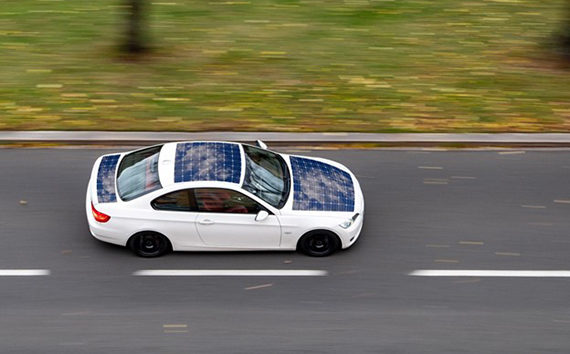Going solar has become more popular over the years. The federal government looks to increase its popularity by offering up a tax credit of up to 30% of the solar panel system installation costs through 2032.
While solar panels on your home are one way to help reduce your reliance on fossil fuels and your carbon footprint, what other things can we do with solar energy? You may be surprised to learn all the neat innovations available and in development involving solar power.
So what are some of the new and exciting solar solutions and ideas in the works and available today? Keep reading to learn about seven innovative ideas and solutions that harness the sun’s mighty power.
Benefits of Going Solar
While there are obvious benefits to going solar — the leading one being a reduced reliance on fossil fuels — other lesser-known benefits exist. Let’s check out how going solar can benefit you.
You Can Save Money
By being less reliant on fossil fuels, you will almost instantly notice your electricity bills falling if you use photovoltaic panels (PV system) or solar panels for your home. Depending on how your electricity provider bills you, you could earn cash selling the excess electricity you put into the power grid to them. This is referred to as being a net producer.
In addition, as you replace battery-powered items with solar, you have a virtually unlimited power source in the sun, so you will be able to stop spending cash on batteries. Plus, as solar technology expands to automobiles, you will need to charge electric vehicles less, reducing your costs on longer trips.
As solar continues to become less expensive, your savings will grow.
Your Power Remains on During Outages
When you have a household solar power system and a battery storage system — these are often called solar-plus systems — the batteries collect and store any excess electricity you create. Suppose the power goes out due to weather or a blackout in your area. In that case, the batteries will provide the energy you need to keep things like your refrigerator, heating and air conditioning, and other necessities running.
Your Property Value May Increase
A Berkley Lab Study found that buyers would pay an additional $15,000 if a home included an average-sized solar panel system, a 3.6-kilowatt system. Of course, many variables come into play here, including current market conditions, the area, local laws, the age of the system, and more. Still, the potential exists to add value to your home with a solar panel system, which can offset the sometimes high installation costs.
Of course, this only applies to solar panel systems you own. There’s also the option to lease the panels, but these panels belong to a company and generally don’t convey in a house sale.
7 Solar Solutions and Ideas for a Greener Future
Now that you understand some of the benefits of going solar, let’s review the innovative ways to bring solar into your life. Most everyone knows all about solar energy panels for your home, but these seven innovative solar solutions and ideas expand upon that and introduce this renewable energy in new ways.
1) Solar Roofs
Solar panel installation entered the public eye for houses back in 1979 when President Jimmy Carter installed solar cell panels on the White House roof. Since then, solar installation has become more popular and cost-effective. It’s also been through many changes. One of the more recent changes is the idea of solar roofs.
Some homeowners want to switch to solar as a clean energy source but just don’t like the looks of the bulky solar panels hanging on their roofs. Solar roofs eliminate this by building photovoltaic (PV) modules right into the shingles. This gives the home a more traditional look while taking advantage of 100% of your roof to absorb the sun’s rays.
You can work a solar roof conversion into the timing for your typical roof replacement: every 10 to 20 years for shingles or 25 to 50 years for tiles. You can then work the cost of the roof replacement — typically around $9,000 — into the solar roof cost.
How much do solar roofs cost? That depends on the company, your power needs, and your roof design. According to Forbes, a Tesla solar roof system with the required Powerwall, which is a battery pack to store your excess power, costs $46,425 for a 1,000-square-foot, single-story home and rises to $81,961 for a 3,000-square-foot, three-story home. This is before the 30% federal tax credit.
2) Solar Cars
Electric vehicles (EVs) have undergone many changes over the past few decades as they shifted from novelties to daily drivers. But the one issue with them is you still need to plug into an electrical source to charge them, and that power source often taps into fossil-fuel-based power plants. So, while you’re not directly producing emissions, you are still pulling power from an emissions-producing source.
A solar-powered car is one innovative technology that’s still developing and could be a game-changer. The automaker Lightyear is working on this with its upcoming Lightyear 2 model that recharges by plug and solar panels atop the vehicle. Lightyear estimates this will give you over 500 miles of range per charge. Lightyear 2 will not be a fully solar car, but it is a step in that direction and can spawn new, more advanced technology that can shift us to full solar-powered cars.
3) Solar Roads
There are about 4 million miles of roads in the U.S. Imagine the clean energy created if most of these roads were actually made from solar panels. This has been an ongoing experiment worldwide and has yet to be overly successful. In fact, most have been deemed failures for various reasons. But as with any developing technology, you learn from failures and build from there.
Once the technology is perfected, these solar panel roadways can power nearby homes and businesses, dramatically reducing our reliance on fossil fuels. They can also install inductive charging systems to charge EVs and even roadway lighting to guide drivers or reroute traffic during rush hour.
4) Solar Paint
Imagine painting on renewable energy. Pretty cool, right? This is not ripped from some science-fiction novel — it’s a reality. Solar paint contains billions of light-sensitive materials that capture the sun’s energy and convert it to sustainable energy, and anyone can apply it to the outside of their home or building to turn the entire surface into one large solar panel.
Solar paint isn’t available for the masses yet, as it’s still in development. The only hold-up is its overall efficiency — the amount of the sun’s energy it can capture. Currently, solar paint is 3% to 8% efficient, meaning it can capture 3% to 8% of the sun’s energy. Commercially viable solar technology is about 10% efficient. For reference, silicon PV panels have broken the 20% efficiency barrier.
The best part of this solar project is homeowners can do most of the installation themselves. Of course, an electrician would need to do the wiring and connection, but the painting would be no different than any other paint.
Considering the paint has reached as high as 8% efficiency, this building-integrated photovoltaics technology may not be as far off as some believe.
5) Solar-Powered Cell Phone Chargers
Our lives are tethered to cell phones today. They act as our schedulers, payment methods, navigation, and much more, so we’re always looking for a place to charge up when we’re out and about. Not every place you go will have a port to plug into, and it’s too easy to forget to recharge your portable battery packs.
What if you could carry around your own mobile charger that’s powered by the sun? This is very much possible, as you can find a wide range of solar-powered chargers online. They range greatly in speed, the number of ports, and so on, but you have a broad selection, and if you’re feeling industrious, you can even build your own.
6) Solar Thermal Systems
Solar panels create some serious heat. In fact, they can be up to 36 degrees Fahrenheit hotter than the ambient air. This heat can make them less efficient, as their optimal operating temperature is 77 degrees Fahrenheit.
Some installations include a cooling agent — typically water — to absorb the heat from the panels and help cool them. The byproduct, of course, is hot water. This newly heated water can then be used to warm other things, making good use of this otherwise wasted heat energy.
7) Solar Windows
Another building-integrated photovoltaic technology is the solar window. The U.S. has an estimated 5 billion to 7 billion square meters of glass nationwide. Imagine if we converted all that glass into solar glass.
Solar windows are clear, just like any other window, but they also have properties to absorb ultraviolet and infrared light and convert it into clean electricity. Solar windows alone could account for 40% of the U.S.’s energy needs by basically converting skyscrapers and other buildings into their own solar farms.
Take Your First Steps to Sustainability With Carbon Removal From Terrapass
While these seven solar solutions and ideas are great things to look forward to, not all are realities today. And those that do exist today may still be a little pricey for most people. Fortunately, you have many options to reduce your carbon footprint, and this can start with carbon removal options from Terrapass.
Get started today with one of a wide range of carbon removal options to fit your needs, including those to counter the carbon produced on a flight. We also have options for weddings and eco-tourists. If you want to purchase carbon removal credits to cover your entire carbon footprint, our carbon calculator can help you determine how much you’ll need to purchase.
Brought to you by terrapass.com
Featured image:











